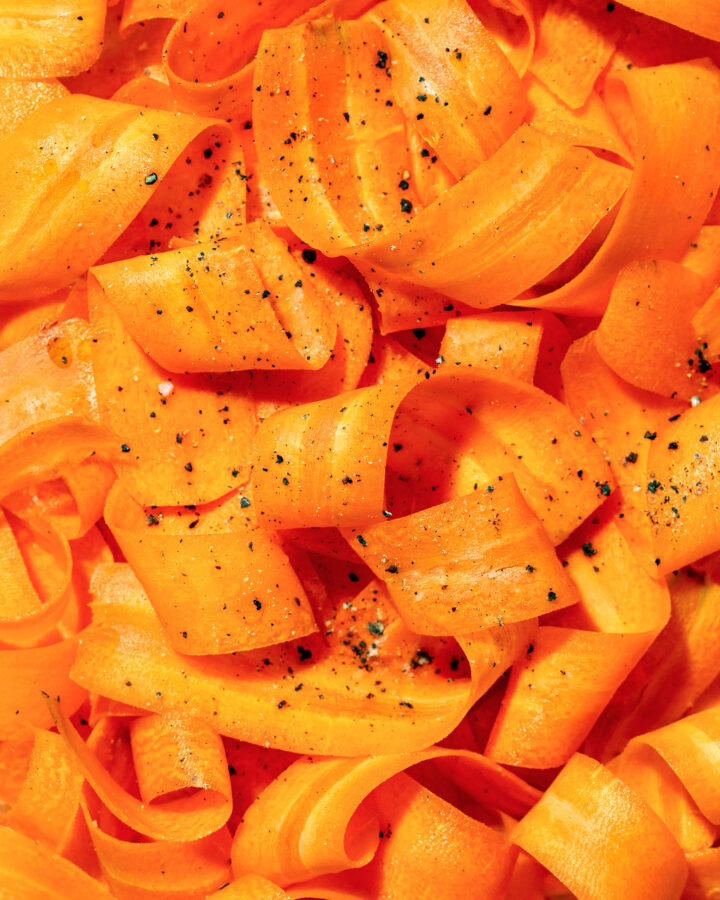These Foods Can Protect You from Microplastic Exposure

Dietary fibers may strengthen your gut barrier, balance your [mahy-kroh-bahy-ohm]nounThe community of microorganisms (bacteria, viruses, fungi) living in a particular environment, especially the gut.Learn More, and help flush out microplastics, naturally.
Microplastics, tiny fragments of plastic microplastics (plastic particles between 1 micrometer (µm) and 5 millimeters (mm) in size, and nanoplastics typically less than 1 µm) have infiltrated nearly every corner of our environment. From oceans to soil, air to drinking water, and crucially, our food supply, these microscopic pollutants are increasingly recognized as a novel threat to human health. Though much remains unknown, emerging science is uncovering the insidious ways microplastics disrupt gut health and systemic wellness.
The very foods that support a thriving gut and [lon-jev-i-tee]nounLiving a long life; influenced by genetics, environment, and lifestyle.Learn More may also offer a frontline defense against microplastic damage, specifically dietary fibers, those indigestible plant polysaccharides renowned for digestive and metabolic benefits. A comprehensive review in Food Frontiers highlights the potential of dietary fibers to reduce microplastic health risks by binding these particles in the gut and promoting their excretion.
Why Microplastics Matter for Your Gut Health
Microplastics enter our bodies primarily through what we eat and drink. Studies have detected microplastics in seafood, salt, honey, fruits, vegetables, bottled water, and even processed meats, virtually everywhere on your plate. Once ingested, most microplastics pass through the digestive tract, but smaller particles can breach the intestinal barrier, travel via blood and lymph, and settle in organs.
These plastics, often carrying toxic chemicals and pollutants, can disrupt the delicate balance of your gut microbiome, increase intestinal permeability (sometimes called “leaky gut”), and trigger [in-fluh-mey-shuhn]nounYour body’s response to an illness, injury or something that doesn’t belong in your body (like germs or toxic chemicals).Learn More, all factors linked to chronic diseases ranging from inflammatory bowel disease to metabolic syndrome and even neurodegenerative conditions.
For a longevity-minded folks, preserving intestinal integrity and microbiome diversity is paramount, and that’s where dietary fibers come in.
How Dietary Fiber Protects Against Microplastics
Dietary fibers (DFs) are carbohydrates found in plants that resist digestion in the small intestine. They fall broadly into two categories:
- Soluble fibers: Dissolve in water to form gel-like substances fermented by gut microbes into beneficial short-chain fatty acids (SCFAs).
- Insoluble fibers: Add bulk to stool, speed transit through the gut, and physically bind substances for elimination.
Emerging research suggests fibers may help protect your gut and overall health from the harmful effects of microplastics in several ways:
- Binding and Expelling Microplastics: Insoluble fibers like wheat bran and chitosan have porous, honeycomb-like structures with charged surfaces that can physically adsorb microplastic particles. This adsorption reduces the time microplastics spend in the gut and promotes their elimination, limiting absorption into the body.
- Strengthening the Gut Barrier: Soluble fibers ferment in the colon to produce short-chain fatty acids (SCFAs) such as butyrate, which help reinforce the intestinal lining. A robust gut barrier reduces microplastic penetration into the bloodstream and potentially decreases systemic inflammation.
- Supporting a Happy Microbiome: Fiber serves as food for beneficial gut bacteria, fostering a healthy microbiota that outcompetes harmful microbes. A balanced microbiome may protect against microplastic exposure.
- Adsorbing Co-Pollutants: Microplastics often carry toxic chemicals, like heavy metals and carcinogens, on their surfaces. Dietary fibers can bind and help remove some of these harmful substances, potentially reducing their bioavailability and toxicity.
While most of the evidence comes from laboratory and animal studies, these findings collectively support the idea that a high-fiber diet, rich in whole grains, fruits, vegetables, legumes, nuts, and seeds, offers a natural, accessible way to bolster your gut’s defenses against microplastic exposure. As research continues to evolve, fiber remains a foundational tool in protecting intestinal health and promoting longevity in today’s plastic-laden environment.
Before You Pop a Fiber Supplement, Read This
While dietary fiber supplements can be a convenient way to boost your fiber intake, recent research reveals a surprising and concerning fact: microplastics have been found in all tested fiber supplements. A 2024 study analyzing nine popular over-the-counter fiber supplements in Australia detected microplastic fibers, mainly fiber-shaped microplastics and polyamide, and fragments in every product, with an average daily ingestion of nearly six microplastic particles from supplements alone.
Not all fiber supplements carry the same microplastic burden. Powder-based fiber supplements tend to have higher microplastic contamination than gummy forms, likely due to processing and packaging differences. Supplements derived from raw plant materials with minimal processing, such as whole psyllium husk or oat bran powders, may have a greater risk of microplastic fibers introduced during harvesting, processing, or blending, especially if plastic machinery or packaging is involved. Gummy or capsule forms might have less microplastic contamination, but could still be exposed via packaging or additives.
To minimize microplastic intake from fiber supplements, consider these tips:
- Choose gummy supplements over powder. Powder-based fiber supplements tend to have higher microplastic contamination than gummy forms.
- Choose fiber supplements with transparent testing, sourcing, and manufacturing practices. Look for brands that disclose quality control measures aimed at reducing plastic contamination.
- If you can find them, choose supplements packaged in glass or metal containers over plastic packaging to reduce leaching or abrasion-related microplastic release.
- When possible, prioritize fiber-rich whole foods such as fruits, vegetables, legumes, and whole grains over supplements for your daily fiber needs.
If using supplements, start with smaller doses and observe for any digestive changes, aiming to balance convenience with quality and safety. And don’t forget to hydrate!
The Foods That Help Protect You from Microplastics
The science on microplastics is still evolving. But eating a diet rich in diverse, high-fiber plant foods offers a simple, natural way to fortify your gut against microplastic exposure. Aim to consume 25 to 35 grams of fiber daily, increasing your intake gradually to minimize digestive discomfort. Prioritize whole foods over processed options, since refining grains and processing snacks drastically reduce their fiber content.
Focus on these fiber champions:
- Oats, barley, quinoa, and wheat bran provide both soluble and insoluble fiber. Wheat bran especially offers porous structures ideal for binding toxins.
- Apples, pears, berries, oranges, and bananas are fiber-rich and packed with antioxidants. The soluble pectins in fruits ferment into short-chain fatty acids (SCFAs) that boost gut health.
- Broccoli, Brussels sprouts, leafy greens, carrots, and sweet potatoes deliver a range of fibers that nourish your microbiome.
- Lentils, chickpeas, beans, and peas are fiber powerhouses that enhance microbiome diversity and produce [an-tee-in-flam-uh-tawr-ee]adjectiveReducing inflammation, which contributes to better overall health.Learn More SCFAs.
- Chia seeds, flaxseeds, hemp seeds, and almonds add fiber, healthy fats, and micronutrients for gut and systemic health.
Pro tip: Staying well-hydrated is essential when increasing your fiber intake because fiber absorbs water, which helps soften stool and promotes smooth movement through your digestive tract.
Microplastics pose an emerging risk to intestinal and overall health, but science offers a powerful, accessible ally: fiber-rich foods. By nourishing your gut barrier, balancing your microbiome, and helping flush toxins, dietary fibers act as a frontline defense in today’s plastic-pervasive world.
For anyone committed to thriving long and well, the simplest step might be as close as your next meal, a colorful, fiber-filled plate that protects you from within.
The information provided in this article is for educational and informational purposes only and is not intended as health, medical, or financial advice. Do not use this information to diagnose or treat any health condition. Always consult a qualified healthcare provider regarding any questions you may have about a medical condition or health objectives. Read our disclaimers.

